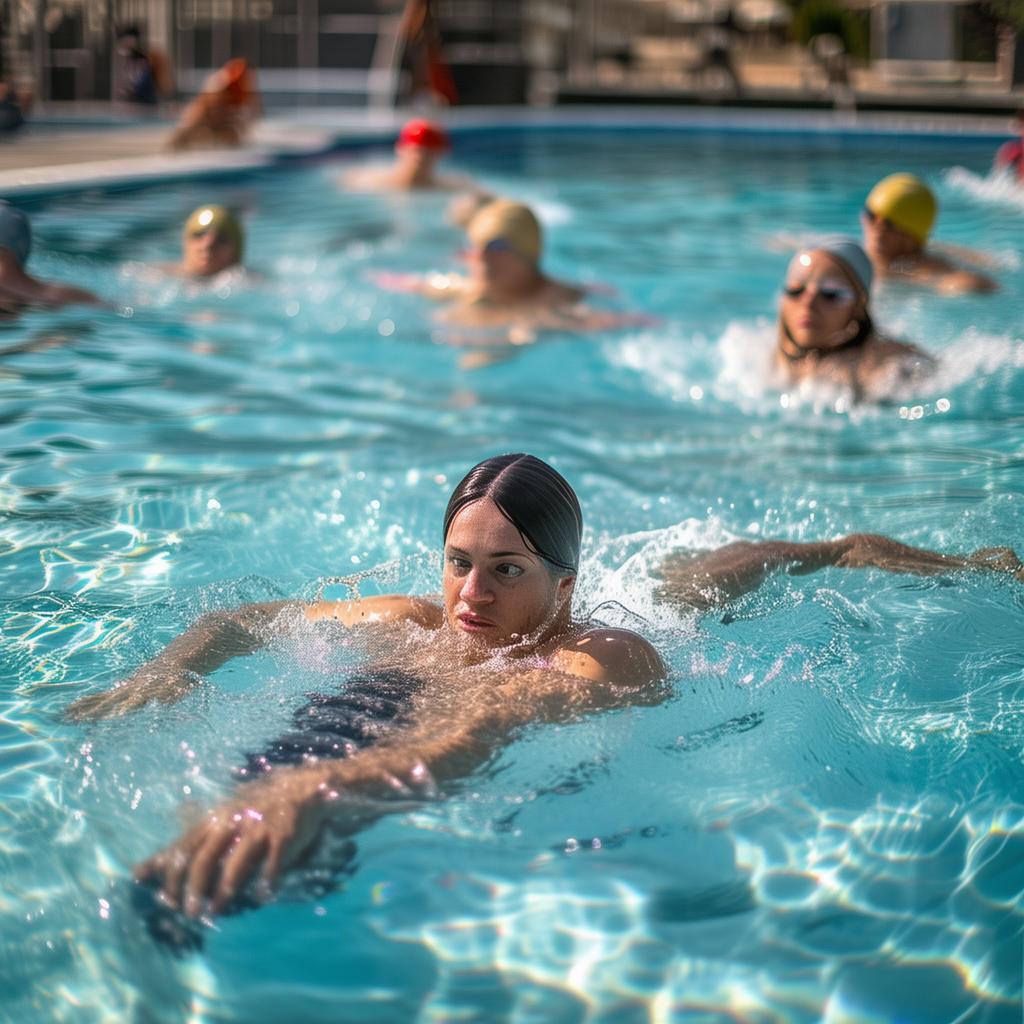The Benefits of Regular Swimming for the Body
Swimming is a beloved sport, widely embraced by many and implemented in educational institutions like schools and universities. It serves as an excellent full – body exercise and a great aerobic activity, effectively aiding in weight loss and shaping a fit and beautiful physique.
First, it can effectively consume the body’s energy. As a full – body exercise, swimming utilizes various physical strengths during the process, resulting in relatively large energy consumption. Moreover, since the thermal conductivity of water is 24 times greater than that of air in our daily life and the water temperature is generally lower than the body temperature, more heat is consumed.
Second, it can effectively care for the skin. During swimming, all muscle groups need to work together, and the body expends more energy in water than on land. Through the buoyancy, resistance, and pressure of water, along with the strong counter – resistance generated by the human body’s rowing, it can provide a certain degree of massage to the skin, making the skin fairer and more delicate.
Third, it can avoid lower limb and waist sports injuries. Because swimming takes place in water, part of the body’s weight is borne by water buoyancy during the swimming process. We can exercise while more effectively avoiding lower limb and waist sports injuries, without damaging the joints and bones of the lower limbs, thus reducing the risk of more injuries and illnesses.
Common Ways of Swimming
Swimming is an aerobic exercise that can be carried out at an appropriate time throughout the week. During the learning process, we can also master different swimming styles, such as freestyle, breaststroke, backstroke, etc., and alternate the exercises. The following are the common swimming styles:
Freestyle: This swimming style was created by Australian Wyllys in 1850. It involves placing the hands on the water surface and moving forward freely, somewhat similar to the butterfly stroke. Later, it was improved by combining the use of chest strength, alternating hands in the water to row forward, and kicking the water with the two legs side by side, completed with breathing. A common expression in daily life is to stroke the water twice, hit the water six times, and breathe once.
Breaststroke: As the name implies, breaststroke is easily associated with the stance of a human imitating a frog’s swimming action in water. It is the longest – used and a widely adopted swimming stroke in daily life. During breaststroke, swimmers can better observe obstacles in front and effectively avoid collisions. Since breaststroke was considered slow among several swimming styles in the past, it was often the slowest in freestyle competitions. However, for beginners, it can help with better technical refinement. In recent years, after the improvement of breaststroke techniques, its speed has gradually increased.
Backstroke: First, keep the chest and abdomen parallel to the water surface and the face above the water surface. During rowing, make the body turn flexibly on both sides in the water, using every part of the body. The rotation speed should be fast to keep more in the side position, different from other swimming styles that are lying flat. Use the power of the hands to quickly paddle out of the water, with the shoulders leaving the water early. Then use the power of the ankle joints of the legs to hit the legs, rowing with the body in the water. Breathe while lying on the side quickly.
Fancy Swimming: Synchronized swimming is one of the swimming events specified in the swimming competition rules. It can be performed using freestyle, breaststroke, backstroke, butterfly, etc. It is a personal swimming performance in swimming pool competitions and some large – scale water competitions. It has high requirements for the competitors’ body, swimsuit, headgear, and movement choreography. Unlike general swimming sports, performers usually need long – term professional training and pass selection to perform. It is usually only seen in some professional athletes’ swimming pools, presenting beautiful water movements through various body movements with music, providing an artistic enjoyment to everyone.
Butterfly Stroke: The butterfly stroke was first used by German swimmers in 1926. Its basic action is to keep the body parallel to the water surface in the water, using the palms of both arms to stroke under the side. When the elbows and forearms are at a proper angle, stroke from the outside to the inside first, and then push the water outward from the back all the time, while the legs make up – and – down waves together. The thighs sink, the knees are slightly bent, and the thighs are lifted in time to continuously perform the action while hitting the water. Butterfly swimming is generally carried out through the 1:2 matching action between the arms and legs, that is, the arms paddle once, the legs hit the water twice, hitting the first leg when the arms paddle and the second leg when the arms paddle to the rear, while lifting the head and inhaling at the same time.
Swimming has so many benefits and scientific swimming styles. Such a wonderful sport not only allows us to gain health and a good body shape but also brings us visual enjoyment. A swimmer immersed in the water always looks fair and translucent.





